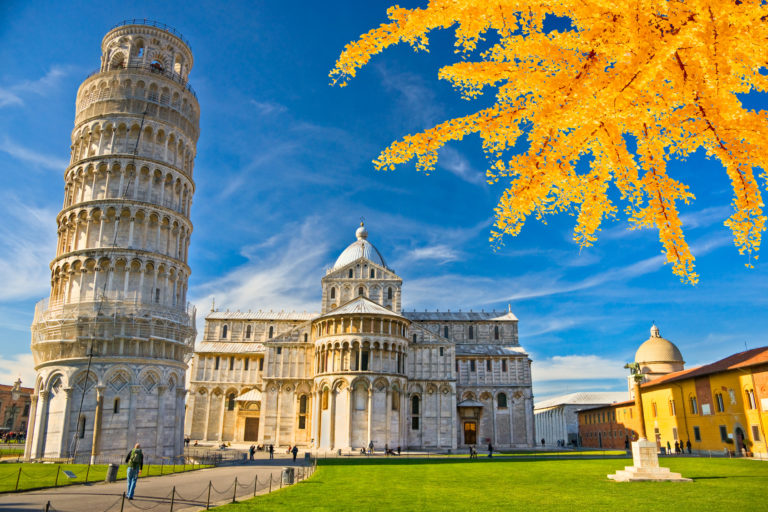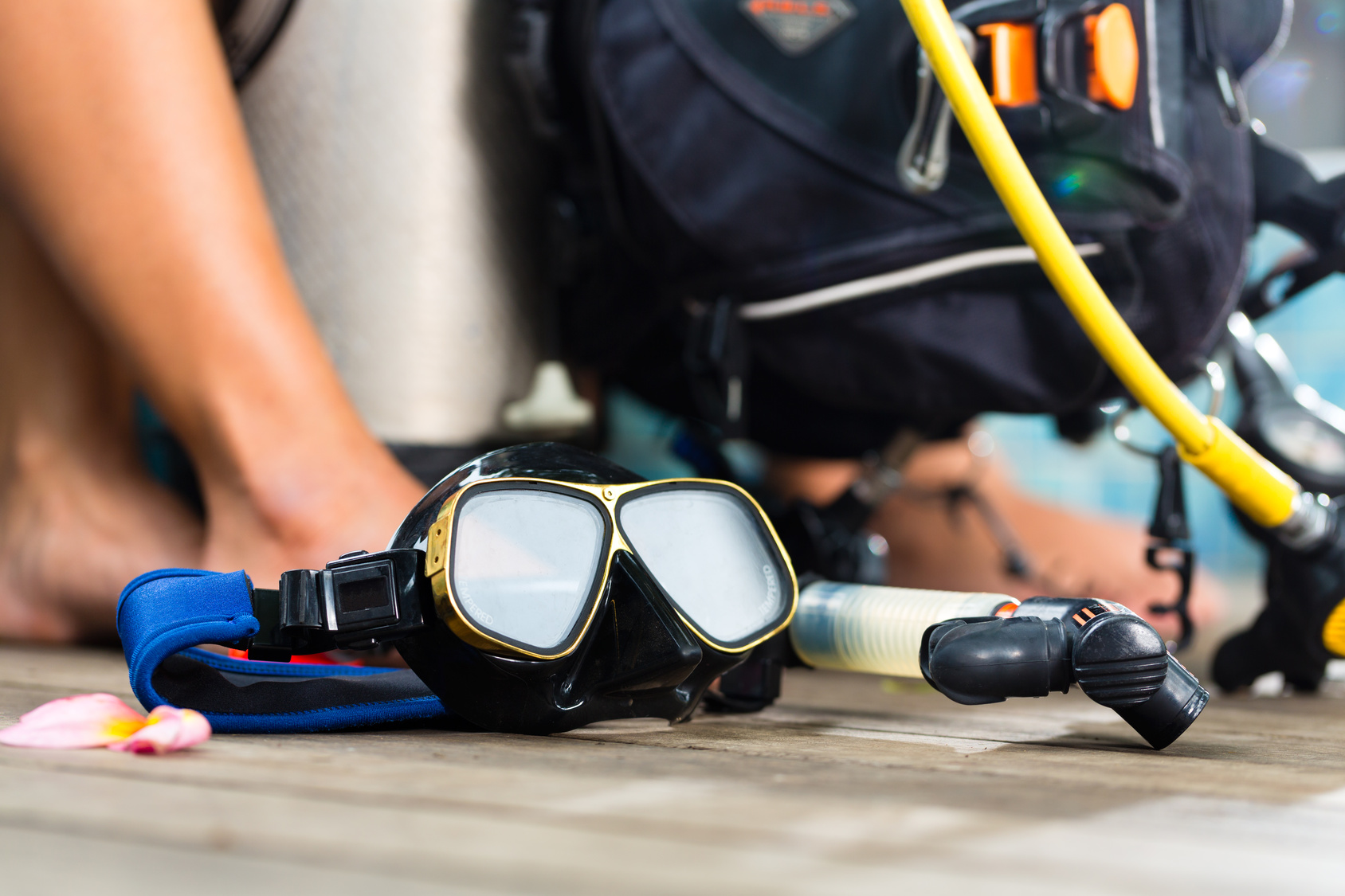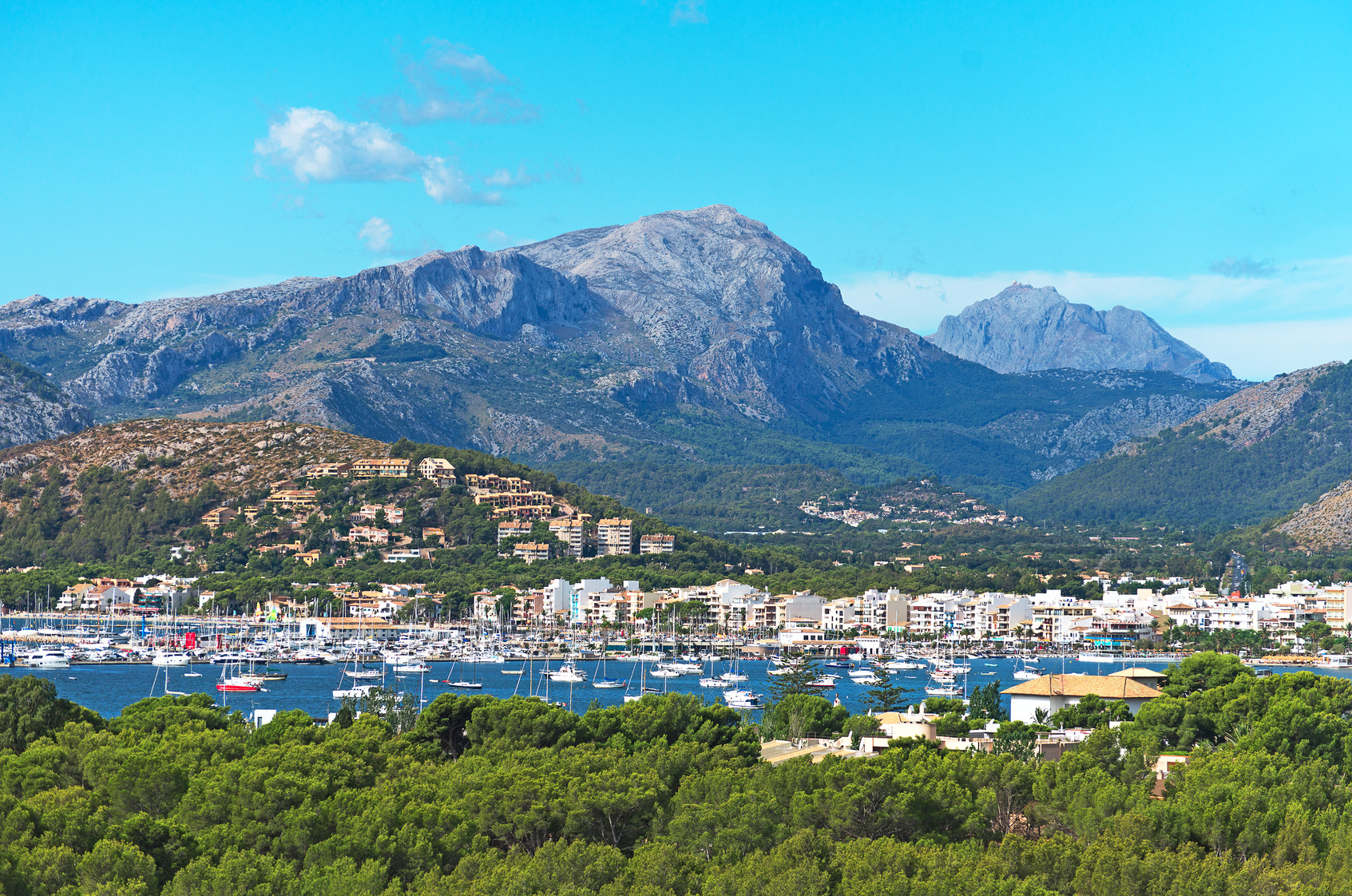When you see Pisa on your Mediterranean cruise itinerary, your mind probably jumps straight to the Leaning Tower. True, the askew international icon is well worth a look, but there’s so much more to see during a stopover in this stunning historic city. So when your ship pulls into port, be ready for a full day ahead with our handy guide.
Can’t get enough of Italy? Check out what Florence has to offer!
What to Do
Luckily for cruise passengers looking to make the most of their stopover, Pisa is a fairly compact city, with many major sites clustered together in close proximity.
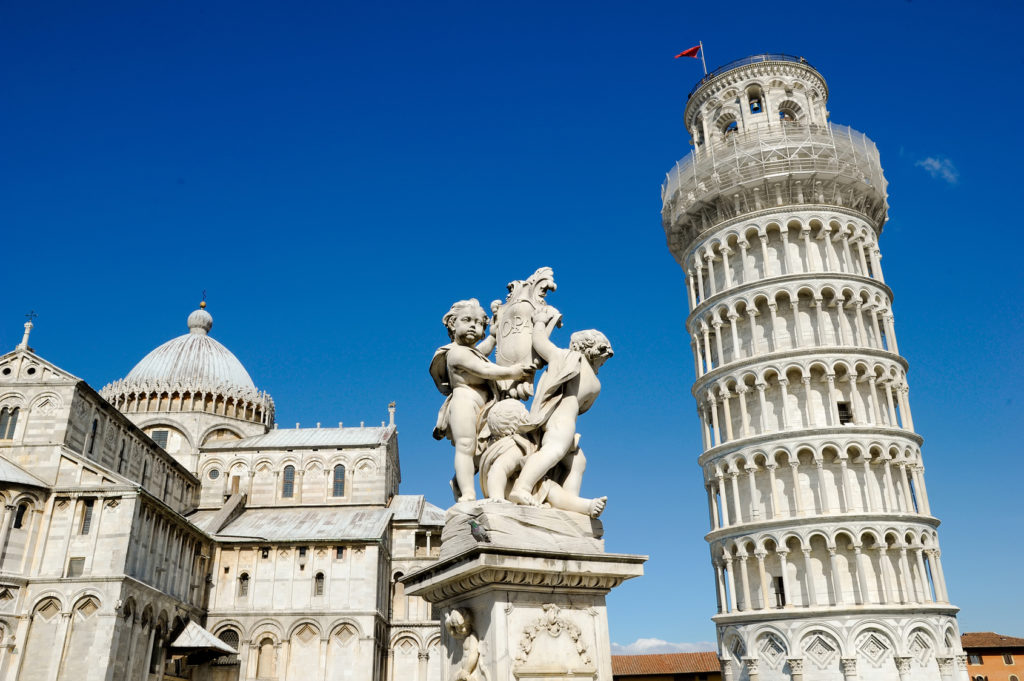
Get started by visiting Pisa’s cultural and religious heart at the Piazza dei Miracoli (Square of Miracles), a lush green square that is home to not one but four great architectural landmarks, each of which is well worth a look. The admission for the sights in the Piazza dei Miracoli is as follows: visiting one monument/museum costs €5.00, two costs €7.00, three costs €8.00, and all four costs €9.00 – a pretty good deal!
Of course, the first thing you’ll notice is the iconic Leaning Tower, a seven-story bell tower rendered internationally famous by virtue of its 4-degree tilt, a result of its construction upon unstable subsoil. Despite its foundational flaws, which have been apparent since the tower’s construction in the 12th century, this beautiful Romanesque landmark still stands firm. Extensive restoration and stabilisation have kept this landmark leaning, and made it possible for visitors to climb to the belfry for fantastic views.
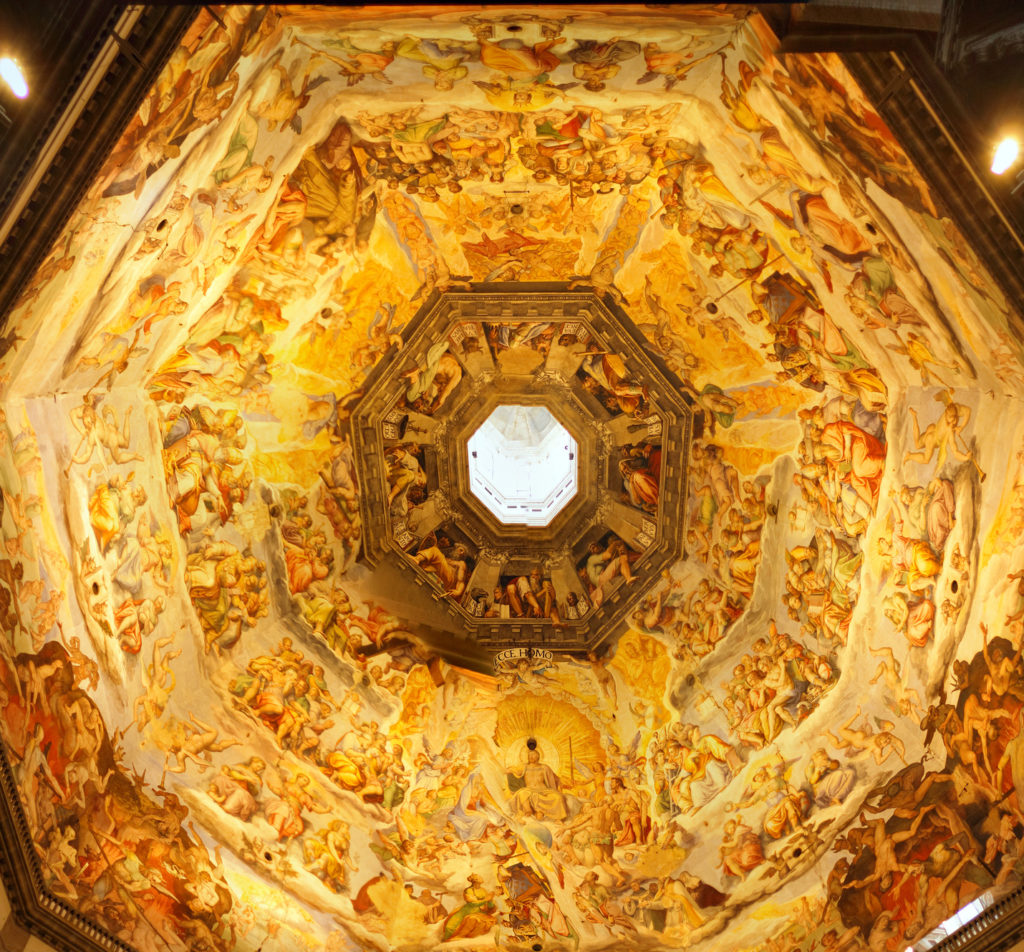
If you’re not keen on ascending the tower, there’s plenty to see on the ground. First, turn your attention from the bell tower to the cathedral itself, the 11th century Duomo di Pisa. This masterpiece of Romanesque architecture is the real star of the Piazza dei Miracoli with its sparkling white marble façade, four rows of graceful arcades, and cast bronze doors. Inside you’ll find dazzling Renaissance artwork, including the beautifully painted oval dome.
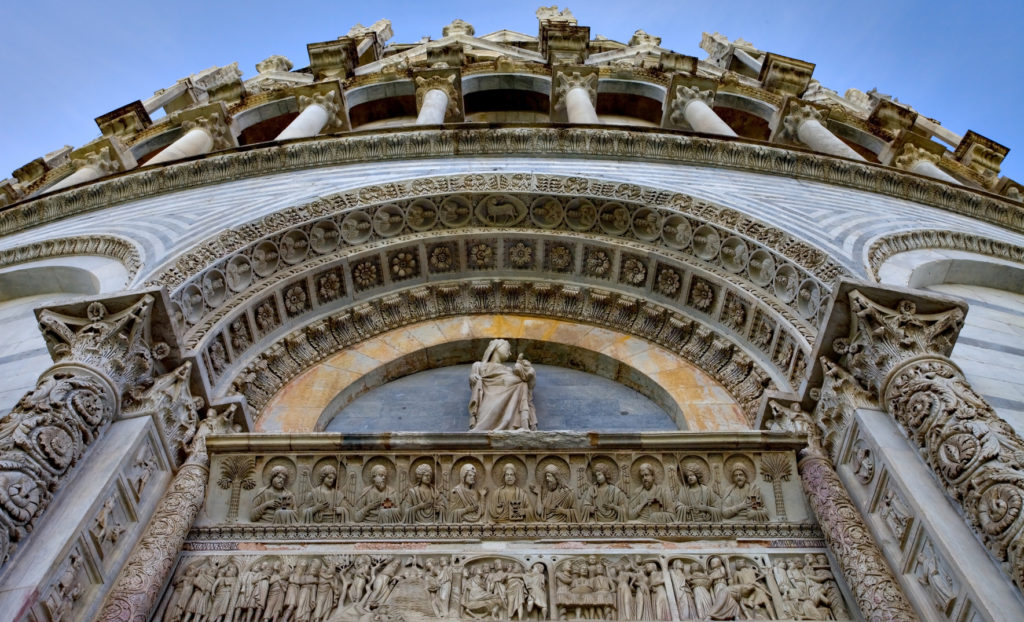
Directly in front of the cathedral is the Baptistery, the largest of its kind in Italy. This red-roofed circular Romanesque building was constructed between 1153 and 1363, and shares many of the architectural themes of the Cathedral and Leaning Tower. Inside you’ll find an enormous baptismal font carved and inlaid in the Gothic style during the 13th century. With its round walls and soaring ceilings, the Baptistery is famous for its perfect acoustics. Stand in the centre when it’s not too crowded, sound a loud note, and listen to it echo around the room.
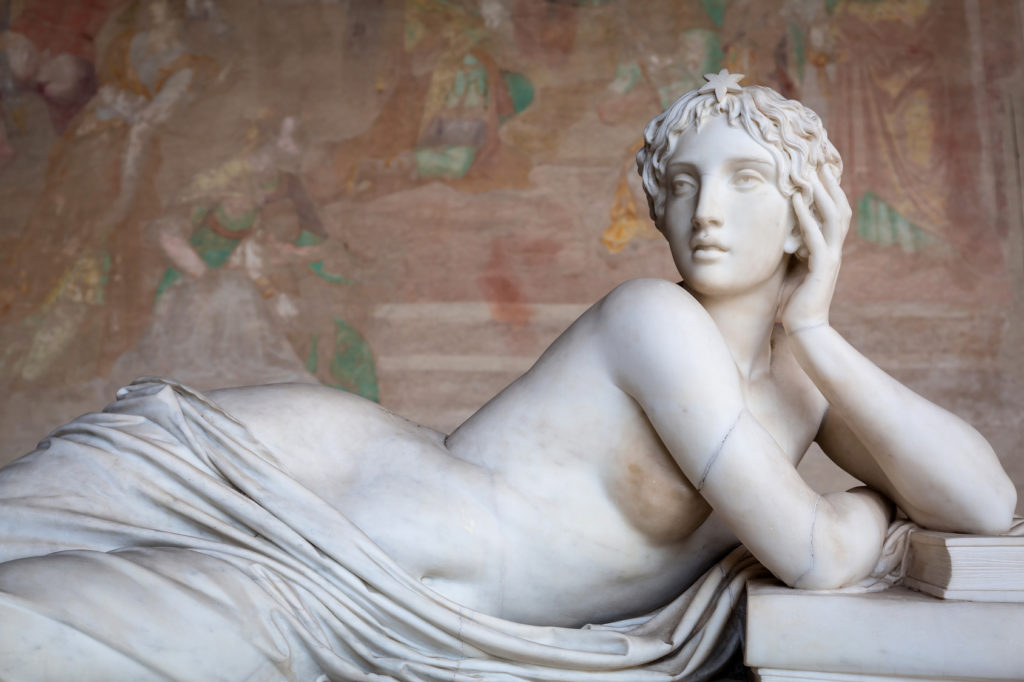
Last but not least, on the northern edge of the piazza you’ll find the Camposanto Monumentale, an elaborate cloistered cemetery built in the 12th century. The structure is said to have been built around a shipload of sacred earth brought back from Golgotha (where Christ was crucified) after the Fourth Crusade. The white marble cloister, which is decorated inside with frescoes and funerary monuments, was designed by Giovanni di Simone, the architect of the leaning tower.
After you’ve hit the highlights of the Piazza dei Miracoli, you’ve earned some lunch. Head south on Via Santa Maria to get to Quarto D’Oro Italia, where the only thing on the menu is exquisite, authentic Italian pizza fresh from the oven. Don’t miss the truffled burrata and sausage pizza – it’s out of this world.
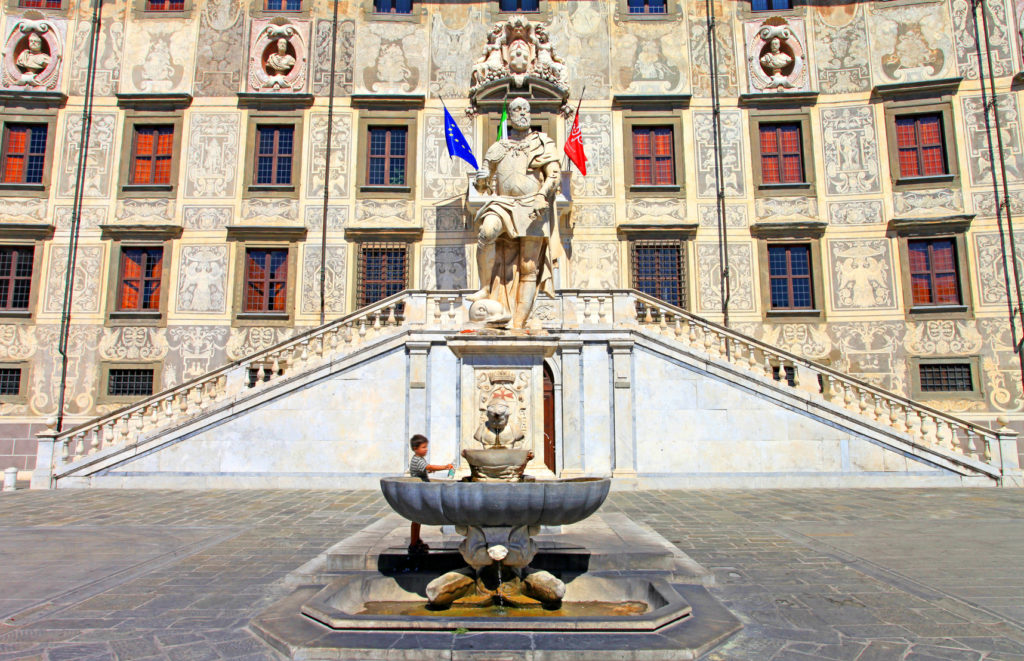
Walk on for another five minutes and you’ll arrive in the Piazza dei Cavalieri, Pisa’s second-most important square. (Hint: you were just in the most important one!) Literally translated as ‘Knight’s Square’, this public space features the grand Palazzo della Carovana, which was the headquarters of the Order of the Knights of St. Stephen during the 16th century. The palazzo, a stunning example of Renaissance architecture, was designed by the famous Italian painter and architect Giorgio Vasari. The façade alone makes for a fascinating study – look carefully to find six Medici grand dukes carved in the exterior, as well as zodiac signs and allegorical figures.
As you leave the square from the southeast corner along Via Ulisse Dini, you’ll arrive at Borgo Stretto, Pisa’s most elegant shopping street. This narrow thoroughfare is pedestrian-only, so you can wander at ease and gaze up at the beautiful and brightly painted townhouses. Along Borgo Stretto’s elegant arcades you’ll find plenty of stores, boutiques, cafes, and restaurants to catch your eye. Even if you don’t intend to splurge on souvenirs, the Borgo Stretto makes for a lovely stroll through Pisa’s historical district.
Round off the day with dinner at Peperosa, a cosy spot where you can enjoy antipasti, Mediterranean seafood, and local wines in a quiet and elegant environment.
How to Get to Pisa
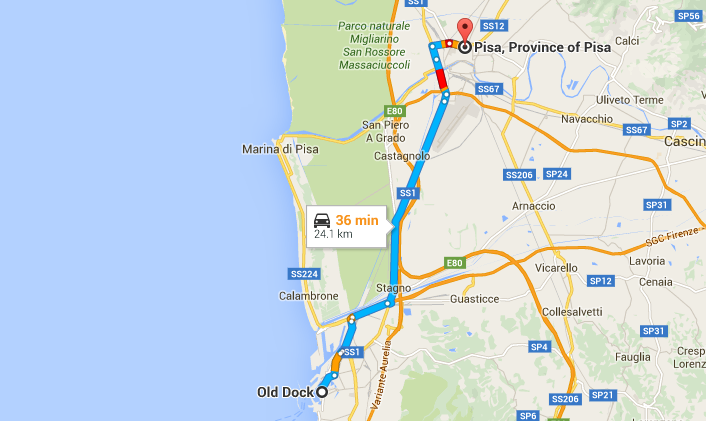
Cruises to Pisa typically dock at Livorno, about 30 kilometres south and west of the city. With a half-hour journey to Pisa and back to the port at day’s end, why risk being held up? Book your Pisa cruise port transfers with Shuttle Direct and rest assured your driver will be waiting for you at the dock to whisk you into this historic city. Total travel time is about thirty minutes, and your driver will gladly drop you off at the first point of your itinerary.
About Shuttle Direct:
As the number one provider of transfer services across Europe and North Africa, Shuttle Direct has extensive experience in making travel just a little bit easier. With services to and from airports, cruise ports, train stations, hotels, and other points of interest, we’re well-equipped to lend a hand to help you along your journey.

